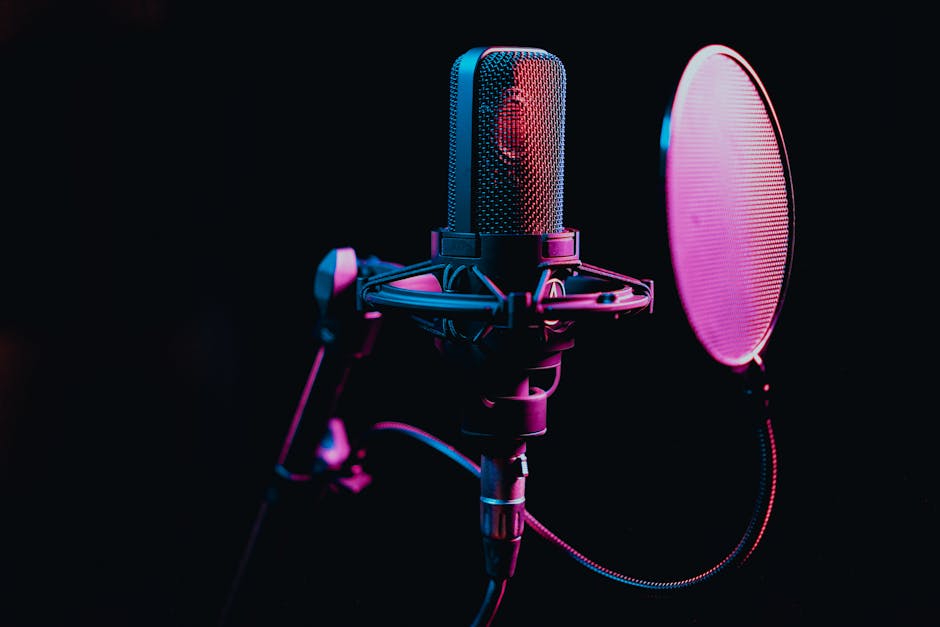My Personal Toolkit for Professional Podcast Production.
My Personal Toolkit for Professional Podcast Production
In the dynamic world of podcasting, where every voice vies for attention, the difference between an amateur recording and a truly professional production often boils down to two things: skill and the right tools. Over years of crafting compelling audio narratives, I’ve meticulously assembled a personal toolkit that serves as the backbone of my professional podcast production workflow. This isn’t just a list of gear; it’s a carefully curated ecosystem of hardware, software, and strategic approaches that consistently deliver high-quality, engaging audio. Join me as I pull back the curtain on the specific instruments and philosophies that empower me to produce podcasts that truly resonate.
The Foundation of My Sound: Intentional Choices in Pre-Production
Before a single word is recorded, professional podcast production begins with meticulous planning. My toolkit for this stage isn’t always tangible hardware, but rather a collection of digital services and mental frameworks that streamline the entire process. It’s about ensuring clarity, organization, and a solid roadmap before hitting record.
Mapping the Narrative: My Content Strategy Essentials
- Google Docs & Sheets: My go-to for outlining episodes, drafting scripts, and managing guest information. The collaborative features are invaluable for working with co-hosts or clients. I use Sheets for tracking episode ideas, release schedules, and content pillars.
- Trello/Asana: For larger projects or managing multiple podcasts, a project management tool is crucial. I lean on Trello for its visual board layout, helping me track tasks from research to final publishing. It keeps me accountable and ensures no step is missed.
- Calendly: Scheduling guests can be a nightmare without a dedicated tool. Calendly integrates seamlessly with my calendar, allowing guests to book slots that work for both of us, minimizing back-and-forth emails.
This pre-production phase is where the vision for each episode is solidified. By investing time here with the right organizational tools, I save countless hours in post-production and ensure a coherent, purposeful final product. It’s about building a strong blueprint before construction even begins.
Capturing Clarity: My Core Audio Hardware Setup
When it comes to the actual recording, my hardware choices prioritize pristine audio capture and reliability. I’ve learned that investing in quality at the source saves immense effort downstream in editing. This is where the sound truly begins to take shape, and my toolkit reflects a commitment to capturing every nuance with professional fidelity.
The Voice’s Vessel: My Preferred Microphones
For in-studio recording, my daily driver is the Shure SM7B. It’s a dynamic microphone renowned for its smooth, rich vocal reproduction and excellent off-axis rejection, meaning it picks up less room noise. While it requires a good preamp due to its low output, the results are consistently warm and broadcast-ready. For remote interviews, where guest setups can vary, I often recommend the Rode NT-USB Mini for its simplicity and surprisingly good sound quality for a USB mic, making it easy for non-technical guests to use.
The Signal Bridge: My Audio Interface
To connect my microphones to my computer, I rely on the Universal Audio Apollo Twin X. This interface is a workhorse, offering incredibly clean preamps, low-latency monitoring, and the ability to run UAD’s acclaimed DSP-powered plugins in real-time. This means I can record with virtual preamps and compressors that sound like their analog counterparts, giving me a head start on my mix. For those just starting, a simpler interface like the Focusrite Scarlett 2i2 is a fantastic entry point, but the Apollo Twin X elevates my sound significantly. For a deep dive into audio interfaces, check out our guide.
Monitoring Perfection: My Headphone Choices
Accurate monitoring is non-negotiable. I use Sennheiser HD 280 Pro closed-back headphones for recording, as they offer excellent isolation, preventing microphone bleed. For mixing and critical listening, I switch to Audio-Technica ATH-M50x, which provide a balanced frequency response, allowing me to hear details and potential issues that might otherwise be missed. Having reliable headphones ensures I’m always making informed decisions about the sound I’m capturing and shaping.
The Digital Workbench: My DAW and Essential Plugins for Crafting Audio
Once the audio is captured, it moves into the digital realm for transformation. My Digital Audio Workstation (DAW) is the heart of my post-production process, complemented by a suite of plugins that serve as my sonic sculptors. This combination allows me to clean, enhance, and master audio to a professional standard, turning raw recordings into polished episodes.
My Primary DAW: The Command Center
My DAW of choice is Adobe Audition. Its robust audio editing capabilities, intuitive multi-track editor, and comprehensive suite of built-in effects make it ideal for podcast production. I find its spectral frequency editor particularly useful for surgically removing unwanted noises like coughs or chair squeaks without affecting the surrounding audio. The integration with other Adobe Creative Cloud apps is also a huge plus for my broader content creation needs. While other DAWs like Logic Pro or Reaper are excellent, Audition’s specific features for speech and audio repair align perfectly with my workflow. Explore Adobe Audition here.
The Sonic Sculptors: My Go-To Plugins
Beyond Audition’s native tools, I rely on a few key third-party plugins:
- iZotope RX Suite: This is my absolute secret weapon for audio repair. Tools like Voice De-noise, De-reverb, De-click, and Mouth De-click are indispensable for salvaging less-than-perfect recordings or simply perfecting good ones. It’s like magic for cleaning up audio.
- FabFilter Pro-Q 3: An incredibly versatile equalizer that offers surgical precision for shaping frequencies. Whether it’s removing harshness, boosting warmth, or creating space, Pro-Q 3 is always on my master bus or individual tracks.
- FabFilter Pro-C 2: My compressor of choice for achieving consistent vocal levels and adding punch. Its visual feedback makes it easy to dial in the right amount of dynamic control.
- Waves L2 Limiter: For the final stage of mastering, the L2 ensures my podcast reaches competitive loudness levels without clipping, maintaining clarity and impact.
Beyond the Edit: Streamlining My Post-Production and Mastering Workflow
Editing is just one piece of the post-production puzzle. To truly achieve a professional sound, a structured approach to mixing, mastering, and preparing for distribution is essential. My toolkit extends to services and techniques that automate tedious tasks and ensure a consistent, high-quality output every time.
Mixing Philosophy: Consistency and Clarity
My mixing process focuses on creating a balanced soundscape where voices are clear, music and sound effects enhance without distracting, and the overall listening experience is seamless. I always start with noise reduction, then move to EQ to sculpt each voice, followed by compression for dynamic control. Volume automation is key to ensuring consistent levels throughout the episode, especially when dealing with multiple speakers or varying recording environments.
Mastering for Impact: The Final Polish
Mastering is where the podcast gets its final shine. After mixing, I apply a mastering chain that typically includes a multi-band compressor for subtle dynamic shaping, a final EQ pass for overall tonal balance, and then a limiter (like the Waves L2) to hit target loudness levels (e.g., -16 LUFS for stereo, -19 LUFS for mono, as per industry standards like the AES recommendations). This ensures the podcast sounds great across various playback devices and platforms.
Automating the Mundane: Transcription and Show Notes
Manual transcription is a time sink. I leverage services like Descript or Otter.ai for automated transcription. Descript is particularly powerful as it allows me to edit audio by editing text, streamlining both transcription and initial editing. These services also provide a fantastic base for generating detailed show notes, complete with timestamps, saving me hours of manual effort and making my content more accessible and searchable.
From Studio to Ears: My Publishing and Promotion Arsenal
Creating a great podcast is only half the battle; getting it to listeners is the other. My toolkit includes platforms and services that simplify distribution, amplify reach, and provide crucial insights into audience engagement. This stage is about connecting my meticulously produced audio with the people who want to hear it.
The Distribution Hub: My Podcast Host
I rely on Libsyn as my podcast hosting




Post Comment